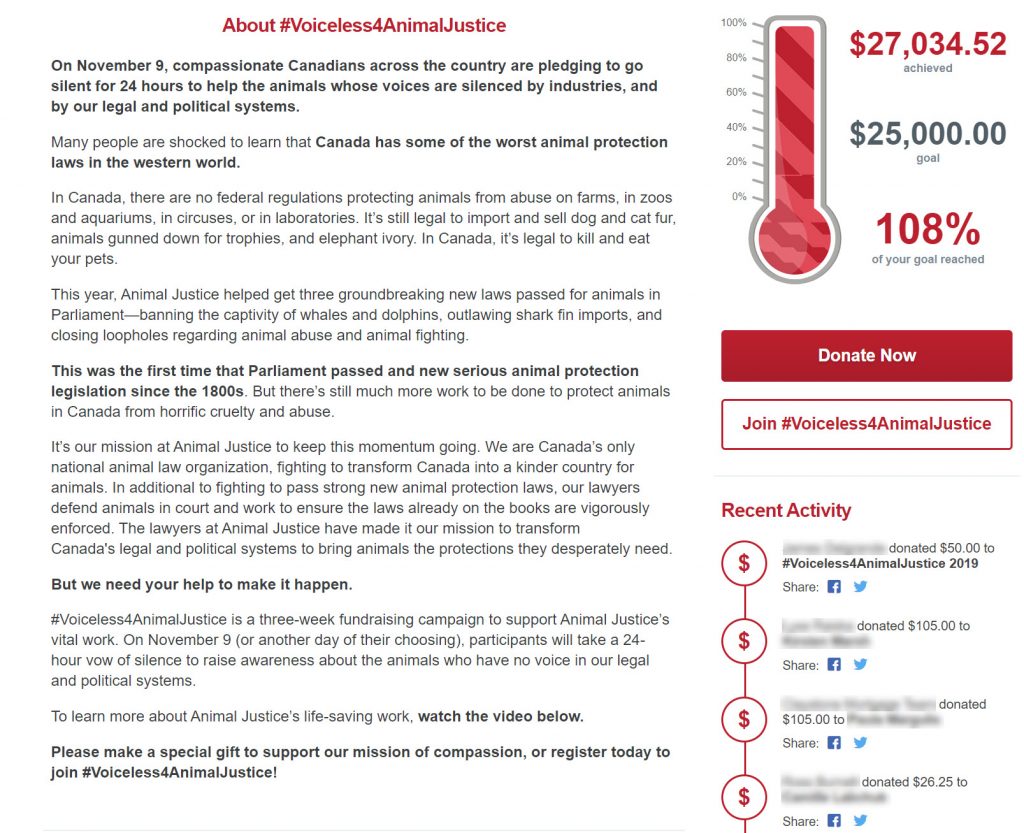Kickstarter is one of the most popular ways Americans are raising funds to finance special projects. They use crowdfunding platforms like Kickstarter, GoFundMe, IndieGoGo, and others because they’re an effective tool to raise funds quickly and share their vision. People give to these projects because it’s simple to do so, giving is low risk, and often there are incentives to backing the project.
You can adopt this crowdfunding mindset to raise crucial funds for special projects of your own. Use these crowdfunding tips when fundraising for a special project to increase your odds of getting fully funded!
Set a time limit
The first of the four crowdfunding tips establishes a sense of urgency for donors. Crowdfunding campaigns lose a lot of momentum the longer they drag out. Inspire donors to give in support of your campaign sooner rather than later to increase your odds of being fully funded. Kickstarter has a default maximum campaign time of sixty days. They studied crowdfunding campaigns with longer durations and noticed these projects were more likely to fail to achieve 100% of its funding.
A devastating outcome of failing to be fully funded on Kickstarter is that you don’t receive any of the pledged funds. When fundraising using your own donation forms, nonprofits can keep donations that came in even if their project isn’t fully funded. That said, sticking to a shorter campaign duration makes your appeal more compelling and increases the odds you’ll reach your crowdfunding goal.
For example, Animal Justice’s 2019 #Voiceless4AnimalJustice crowdfunding campaign took place over a 24-hour period and exceeded the fundraising goal they set. They also wrote an exceptionally compelling story in support of their campaign.

Tell a compelling story
The second of our crowdfunding tips is easy for nonprofits. Tell a compelling story. Another thing Kickstarter gets right is that each campaign creates a video describing the project and why it should be funded. When fundraising for a project, it’s important to tell a compelling story that inspires people to back it. Nonprofits rock at storytelling, so take time to craft the most inspiring message to give. If you need tips, download our storytelling eBook.
Take a page from the Kickstarter playbook and use video to tell that story. Show your potential backers what you’re planning. You can also easily share statistics about your programs and the results they’ve achieved this way too. A short video presents valuable information in a digestible format and is highly shareable.
Be specific with your goal
Specificity boosts campaign performance
This next crowdfunding tip is very important. When engaging in crowdfunding to raise money for a project, campaigns seeking a specific dollar amount work best. Don’t leave your crowdfunding campaign open ended. Instead, estimate your project costs and set a fundraising goal that matches your needs. Share the estimate in your campaign messaging so your backers know why you need to raise that specific dollar amount.
Transparency is important in crowdfunding. You want potential backers to know what they’re funding. An open-ended fundraising goal lacks specificity. This may turn donors away from supporting you. Donors may fear that you’re funneling all excess funds toward overhead expenses or that the project is a money pit if you don’t have a goal based on the projected costs of the project. A specific crowdfunding goal puts your potential backers at ease because you aren’t raising more than you think you’ll need for the project.
Another benefit of setting a specific fundraising goal is that you can show progress toward your goal. Fundraising thermometers make it easy for backers to follow the campaign’s progress.
What if you meet your goal?
You don’t want to stop accepting donations because you’ve reached your goal. Kickstarter has a feature called stretch goals for projects that reach their goals. Stretch goals incorporate funding opportunities for things that are nice to have but not essential.
Introduce stretch goals into your crowdfunding campaign. Once you’ve reached 100% of your goal, produce another video to thank your backers. Let backers know you set a new goal to fund additional materials for the project. Then share funding opportunities that would be nice to have in support of your project. Explain how these optional opportunities would help the project be more successful and then adjust the fundraising goal to factor in these additional opportunities. When you reach optional fundraising milestones, celebrate those wins with your backers and let them know what funding opportunities are still available. If you reach all your stretch goals let supporters know how you’ll use any excess funds that come in after the new goal is reached.
Incentivize giving to your campaign
Kickstarter campaigns encourage campaigners to incentivize supporting their project. Incentives provide a reason other than altruism to give to your project. This last crowdfunding tip asks you to be up front about the benefits of backing your project. If your supporters want to show people that they’ve given to your organization, they might appreciate a physical item like a t-shirt or coffee mug with your logo on it. You can also make incentives more relevant to your project. On Kickstarter, creatives often develop physical items like books or board games. Backers give as a means of buying a copy. If you’re raising funds to develop materials relevant to your cause, send backers a copy if they request it.
Kickstarter offers the option to incentivize giving at different funding levels. You can do the same for your crowdfunding campaign. At lower giving amounts backers are supporting because they’re passionate about supporting your project. Entice giving at higher levels by offering benefits for donations at or above certain dollar amounts. For instance, you could offer items like coffee mugs and t-shirts at low and mid-level giving tiers. Increase the value of incentives up to the highest giving level. Common choices for high dollar amount incentives are naming opportunities, or adding the donor’s name to a donor recognition board. The possibilities for incentives are unlimited. You just need to make sure the incentives you offer are relevant and enticing to your backers.
Conclusion
Fundraising for a project is different from year-round fundraising. Increase project fundraising performance by using these crowdfunding tips. Set a specific time limit and fundraising goal, incentivize giving, and make sure your story inspires people to support your project. By adapting your strategy to incorporate these ideas you can elevate your crowdfunding campaigns and fund more projects. Need a platform for online fundraising for your crowdfunding campaign? We’re happy to help! Request a demo of our peer-to-peer fundraising platform.







